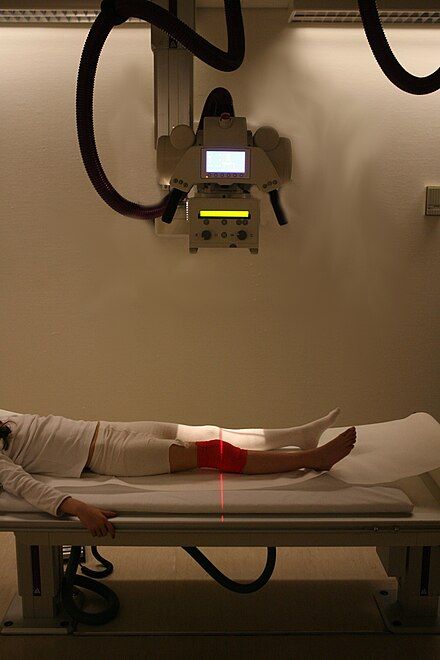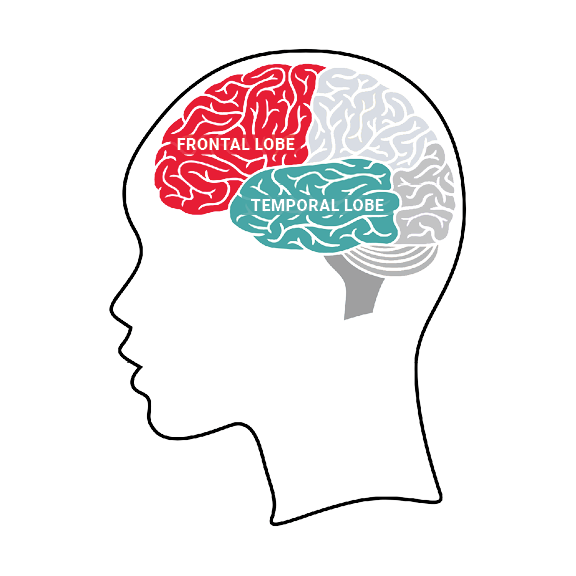
In a revelation that has captured hearts and minds across the globe, Emma Heming Willis, the wife of Hollywood icon Bruce Willis, recently shared a deeply personal and incredibly honest confession. She admitted that, long before Bruce’s devastating diagnosis with frontotemporal dementia (FTD), she actually considered divorce. This isn’t just another piece of celebrity news; it’s a profoundly human story that offers a raw, unfiltered look into the unseen struggles families face when a loved one’s health is silently deteriorating, bringing a whole new level of understanding and empathy to the Willis family’s journey.
Emma’s candidness, shared during an episode of The Oprah Podcast and other interviews, sheds light on the bewildering and heartbreaking period preceding Bruce’s official diagnosis. It was a time when his personality and behavior began to shift in ways that were not only perplexing but also deeply isolating for his family. Her decision to open up about such an intimate struggle resonates with countless individuals navigating similar uncharted waters, making her story not just compelling but truly vital.
Her powerful narrative transforms what might seem like a simple celebrity update into a crucial conversation about love, loss, and the often-overlooked phase of neurodegenerative diseases. It highlights the immense emotional toll and the confusion that can stretch relationships to their absolute limits when a medical explanation remains elusive. Emma Heming Willis is not just sharing her story; she is giving voice to millions who have felt that same sense of bewilderment and isolation, offering a testament to resilience and the profound power of understanding.

1. The Unsettling Pre-Diagnosis Period
Before the world knew about Bruce Willis’s condition, his family was living in a state of confusion and deep sadness, grappling with changes they couldn’t explain. Emma described this period as one where his personality and behavior started to change in ways that were both perplexing and incredibly isolating. She candidly explained that without a diagnosis, there was “no context” for what was happening.
She felt as though she was “just trying to navigate something that is unknowable.” The immense pressure of this uncertainty left her in a constant state of “fight or flight,” a feeling that many caregivers can deeply relate to. It was a time of immense emotional strain, where the person she loved was changing, but the *why* remained a frustrating mystery.
Emma recounted feeling “annoyed” with Bruce during this time, a sentiment born from not understanding the profound shifts occurring. She confessed, “I was just annoyed with him. I didn’t understand what was happening and the conversations we were having.” This raw honesty illuminates the difficult emotional landscape she was navigating, where love was intertwined with confusion and exasperation.
It was a dark and bewildering time, marked by a sense of foreboding that permeated their daily lives. The struggles continued for a couple of years, creating an environment that was challenging for everyone, especially for Emma, who was trying to make sense of inexplicable changes in the man she married. Her marriage, she shared, felt like it was “crumbling” under the weight of this unknown.

2. The Honest Divorce Confession
It was during this period of intense confusion and marital strain that Emma Heming Willis made a truly startling confession: she considered divorce. This revelation, shared openly, underscores the profound impact Bruce’s undiagnosed condition had on their relationship. She admitted, “100% thought about divorce, yes.”
This wasn’t a fleeting thought but a serious consideration born out of desperation and a lack of understanding. Emma expressed her bewilderment at the time, stating, “I didn’t understand how our relationship was so connected, we were so enmeshed. And yet, all of a sudden things started falling apart.” The sudden unraveling of their deep connection, without a clear reason, was agonizing for her.
Her admission highlights the sheer unknowability of the situation before a diagnosis provided context. The changes in Bruce were so significant and so baffling that Emma, feeling lost and isolated, genuinely contemplated ending their marriage to find a sense of relief or safety. It’s a powerful testament to the emotional extremes experienced by those living with a loved one whose health is mysteriously declining.
This candidness gives other caregivers permission to acknowledge their own overwhelming feelings, even those that might seem taboo or guilt-inducing. Emma’s vulnerability in sharing such a private and painful thought resonates deeply, showing that even in the most loving relationships, the burden of the unknown can lead to desperate measures. It’s a poignant reminder of the unseen battles fought behind closed doors.
Read more about: Yikes! 14 Hollywood Stars Who Acted Like Total Jerks and Seriously Felt the Burn

3. A Marriage “Crumbling” Without Explanation
Emma painted a vivid picture of a marriage under immense strain, describing how it felt like it was “crumbling” before her very eyes. This feeling stemmed from a profound sense of disconnection, where the very foundation of their relationship seemed to be eroding without a discernible cause. She recounted the devastating realization, “What is going on? This is not the person that I married. Something is just so off. And I just couldn’t figure it out.”
The conversations they were having became problematic, as Bruce wasn’t recalling things they had discussed. “Conversations we had, he wasn’t recalling,” the mom-of-two shared, indicating a breakdown in their communication that left Emma feeling increasingly isolated. Their shared understanding and intimacy, once a cornerstone of their bond, began to fray, leaving Emma feeling adrift and confused.
Perhaps most heartbreakingly, Emma felt that their “values didn’t seem to be matching anymore.” This shift in fundamental principles created a chasm between them, making her question the very nature of their partnership. “Our values just didn’t seem to be matching anymore,” she explained, highlighting a core misalignment that shook her belief in their future together. She confessed, “I didn’t understand the conversations we were having. We just weren’t aligned and I didn’t know why.”
This period of uncertainty and emotional turmoil took a significant toll on Emma’s mental health. She experienced feelings of loneliness and isolation, exacerbated by the lack of an explanation for Bruce’s changed behavior. It was a time of deep sadness and anger, as she struggled to differentiate between what was happening to Bruce and who he was. As she revealed, “It was really hard for me to just separate what I was pissed at and who I was pissed at. I just wasn’t in a good state of mind. And it wasn’t good for Bruce, it wasn’t good for our children, it wasn’t good for anyone – especially not me.”
Read more about: Beyond the Screen: 13 Chilling Horror Films You Won’t Believe Are Rooted in Real-Life Terrors

4. Early Warning Signs: A Stutter’s Return
The subtle shifts in Bruce’s behavior that foreshadowed his diagnosis were particularly poignant, with one specific detail standing out to Emma: the return of his childhood stutter. This seemingly minor symptom was, in retrospect, an early and significant indicator that something was amiss. It was a clear deviation from his usual communication patterns, signaling that his brain was undergoing changes.
Emma started noticing something was wrong when Bruce’s childhood stutter returned, marking a noticeable regression in his speech. For those around him, especially his closest family, such a change would undoubtedly raise concerns. It wasn’t just an isolated incident; it was part of a broader pattern of language problems that would later be identified as symptoms of frontotemporal dementia.
The NHS states that signs of frontotemporal dementia can include “language problems – speaking slowly, struggling to make the right sounds when saying a word, getting words in the wrong order, or using words incorrectly.” Bruce’s returning stutter aligned precisely with these early indicators, a silent harbinger of the more severe challenges to come.
This specific detail highlights how early symptoms of neurodegenerative diseases can often be overlooked or misunderstood, blending into general aging or even personal quirks. Emma’s keen observation of this particular change underscores the intimate knowledge a spouse has of their partner, allowing them to spot even the most subtle deviations from the norm. It was one of the many puzzle pieces that, only much later, would form a coherent, heartbreaking picture.

5. Emma’s Intuition and the Push for Answers
Despite the confusion and the lack of a clear explanation, Emma’s intuition strongly told her that “something wasn’t right.” This gut feeling became the driving force behind her decision to seek medical advice, marking a critical turning point in their journey. She knew, deep down, that the changes in Bruce were more than just marital issues or personality quirks; they were indicative of an underlying medical condition.
She realized it was time to “raise my hand” and actively advocate for her husband. Emma told Oprah Winfrey, “I knew it was time. I needed to raise my hand and try and be the best advocate I could for my husband and speak to my doctor.” This resolve, born from a blend of love, frustration, and intuition, propelled her forward in the face of immense uncertainty.
This moment of realization was crucial because, as Emma noted, Bruce himself wasn’t “raising his hand about anything.” He wasn’t acknowledging or seeking help for the changes he was experiencing, which is common in many neurodegenerative conditions where insight can be impaired. This left Emma in the sole position of needing to initiate the search for answers.
Her determination to understand what was happening stemmed from a deep desire to protect her family and Bruce. The immense pressure of living in a “fog” without context was unsustainable, and her intuition served as a powerful guide. It was this steadfast resolve that eventually led them down the path to a diagnosis, albeit a painful one, that would finally provide the clarity they desperately needed.

6. The Challenging Road to Diagnosis
Getting Bruce to agree to medical testing was far from straightforward, as Emma candidly revealed it took “a lot of smoke and mirrors.” This detail underscores the immense difficulty families often face when a loved one is experiencing cognitive or behavioral changes but resists seeking professional help. It wasn’t a simple conversation; it required strategizing and persistence from Emma.
The challenges weren’t just about convincing Bruce, but also about navigating a healthcare system to get the right answers. Emma’s description of needing “smoke and mirrors” implies a delicate balance of persuasion and perhaps even gentle deception to ensure Bruce received the necessary evaluations. This highlights the emotional and logistical hurdles she had to overcome.
Ultimately, her persistent efforts paid off, and Bruce eventually agreed to undergo testing. This step was critical, as it marked the transition from living in an “unknowable” state to actively seeking a medical explanation. The journey to a diagnosis is often prolonged and fraught with difficulties, and the Willis family’s experience is a poignant example of this complex process.
The tests tragically confirmed that Bruce’s brain was “changing.” This devastating news, while heartbreaking, also provided the first concrete step towards understanding what they were up against. The journey from confusion to diagnosis was arduous, but Emma’s unwavering advocacy ensured they finally received an explanation, painful though it was, for the changes that had been disrupting their lives for years.
Read more about: The Price of Early Stardom: 12 Child Actors Whose Careers Took a Tumultuous Turn After One Unforgettable Role

7. The Devastating Diagnosis: Clarity Amidst Trauma
The moment Bruce Willis’ family received the specific diagnosis of frontotemporal dementia was, in Emma’s words, heartbreaking but also brought a painful sense of clarity. It transformed their world from one of ‘unknowable’ struggles into one where they finally had a name for the challenges they were facing. This pivotal moment allowed Emma to begin understanding the profound changes in Bruce not as deliberate actions, but as symptoms of a devastating illness.
Emma candidly explained in an interview that giving a name to the disease fundamentally shifted her perspective. This understanding allowed her to move from a place of confusion and exasperation to one of purpose and acceptance. The crushing thought of ‘I can’t do this,’ which had plagued her during the bewildering pre-diagnosis period, was gradually replaced with a strong, determined ‘I have to.’ It was the first step on an entirely new, albeit difficult, path.
Yet, the clarity came with its own unique sorrow. When asked by Oprah Winfrey whether Bruce himself understood his diagnosis in 2022, Emma replied, ‘I don’t think so.’ She added, ‘I don’t think it landed, and I’m grateful for that.’ This profound lack of comprehension from Bruce’s side underscores the cruel nature of FTD, which often impairs insight, and highlights Emma’s protective instincts, finding a small mercy in his unawareness.
Emma’s journey through diagnosis has been openly shared, making it clear that witnessing the progression of FTD is an incredibly traumatic experience. She admitted, ‘His brain is dying and to have to witness it is traumatic.’ This raw honesty brings into sharp focus the immense emotional burden on caregivers, as they observe their loved one slowly being altered by the disease, a process that is both agonizing and deeply personal. It’s a testament to her strength that she speaks so openly about this profound pain, offering solace to others grappling with similar situations.

8. Emma’s Transformation into a Resilient Caregiver
Following Bruce’s diagnosis, Emma Heming Willis embraced a powerful new identity as a dedicated caregiver. This wasn’t just a change in title; it was a profound shift in her life’s purpose, requiring immense resilience and an evolving understanding of love. She stepped into this demanding role with unwavering commitment, becoming the steadfast anchor for her husband and their family.
Emma has openly rejected the often-unrealistic ‘superwoman’ myth that surrounds caregivers. She’s been remarkably honest about the immense emotional toll, admitting that some days she’s ‘not good,’ experiencing moments of ‘grief and sadness.’ This courageous acknowledgment of vulnerability normalizes the difficult emotions inherent in caregiving, giving others permission to feel overwhelmed, angry, and sad without guilt. Her honesty dismantles the expectation that caregivers must always be strong, providing a much-needed sense of solidarity.
Crucially, Emma champions the idea of self-care not as a luxury, but as an absolute necessity for caregivers. She stresses the importance of taking small, deliberate breaks to avoid burnout, recognizing that her own well-being is vital for her ability to care for Bruce and their children effectively. This practical wisdom serves as a beacon for countless others navigating similar paths, highlighting that sustaining oneself is a critical component of sustainable caregiving.
Her commitment to sharing her journey and insights extends to her new book, ‘The Unexpected Journey: Finding Hope and Purpose on the Caregiving Path.’ This endeavor isn’t just a personal memoir; it’s a guide designed to help others facing similar circumstances. Emma’s willingness to detail both the emotional and practical challenges of caregiving through her book solidifies her role as a compassionate and relatable advocate, extending her support beyond her immediate family to a wider community in need.
Read more about: Navigating the Depths of FTD: Bruce Willis’ Health Decline and His Family’s Resilient Journey

9. The Difficult Decision to Move Bruce into Care
One of the most challenging decisions Emma Heming Willis has had to make on her caregiving journey was moving Bruce into a separate, specialized care home. She described it as ‘one of the hardest decisions I’ve ever had to make,’ underscoring the deep emotional weight such a choice carries for any family. This move, while incredibly tough, was made with profound love and careful consideration for everyone involved.
Emma revealed the primary reason behind this difficult choice: Bruce himself would have wanted it for their daughters, Mabel and Evelyn. She emphasized that he ‘wouldn’t want them to be in a home that was more tailored to their needs, not his needs.’ This perspective illustrates a selfless decision, prioritizing the environment and well-being of their young children, ensuring their home remained a space of normalcy and comfort amidst profound change.
The specific symptoms of FTD also played a significant role in this decision. Emma explained that ‘noise causes agitation for people with FTD,’ which meant she had to ‘isolate’ the family and stop having guests over at their primary residence. This practical reality created an untenable situation for family life, necessitating a change to ensure Bruce received optimal care in an environment that minimized his agitation, while also allowing the family to maintain a semblance of their previous life.
Despite the move, Emma emphasizes that Bruce is ‘in really great health overall.’ However, she poignantly adds, ‘It’s just his brain that is failing him.’ This distinction highlights the cruel irony of FTD—the body remains robust while the cognitive functions decline. Bruce now lives in a one-story house with a full-time care team, an arrangement designed to provide round-the-clock support tailored to his evolving needs, while still fostering a strong connection with his family.
Read more about: From Studio Shenanigans to Creative Compromises: How Last-Minute Changes Almost Derailed 12 Iconic Movies

10. A Blended Family United in Love and Support
The Willis family, famously blended with Bruce’s ex-wife Demi Moore and their three daughters, Rumer, Scout, and Tallulah, has truly rallied around Bruce since his diagnosis, demonstrating an extraordinary level of love and cohesion. This close-knit unit exemplifies modern family support, showcasing that love transcends traditional structures, especially during times of immense challenge. Their collective strength has been a consistent source of comfort and stability.
Demi Moore’s unwavering support for Bruce and her close bond with Emma have been particularly touching. The ‘Substance’ actress paid tribute to Emma in a touching Instagram post for International Women’s Day, sharing, ‘I #SeeHer as family who I am honored to call a friend.’ Their relationship goes beyond ex-wife and current wife, embodying a shared commitment to Bruce’s well-being and a unique family connection that is truly inspiring. Demi often shares updates and photos, maintaining a visible presence in Bruce’s life.
Emma ensures that Bruce remains deeply integrated into their family life despite his move to a separate care home. She shared that she and their daughters, Mabel and Evelyn, visit him regularly, including for breakfast and dinner every day. Additionally, Bruce receives frequent visits from their other daughters and a wide circle of friends and family. Emma beautifully described his current residence as ‘a house that is filled with love, and warmth, and care, and laughter,’ emphasizing that his friends ‘continue to show up for him, and they bring in life, and fun.’
This continuous stream of affection and interaction ensures that Bruce is ‘very much here, very much a part of our day-to-day.’ The family has adapted their dynamic to ‘meet him where he’s at,’ focusing on cherishing every moment and finding joy in the present. It’s a powerful testament to their enduring bond, proving that even as circumstances change, the essence of their love and connection remains unwavering.
Read more about: Yvonne Strahovski’s Seriously Head-Turning Transformation: From Aussie Roots to Hollywood Royalty, You Won’t Believe Her Journey!

11. Becoming a Voice: Advocacy for FTD and Caregivers
Emma Heming Willis has courageously transformed her family’s private battle into a public platform, becoming a national advocate for caregivers and FTD awareness. Her openness and vulnerability have resonated with millions, transforming what might have been a personal struggle into a crucial conversation that impacts countless families globally. She is using her voice to make a tangible difference.
Her candid interviews on platforms like The Oprah Podcast and ABC News with Diane Sawyer have been instrumental in this advocacy. Emma’s willingness to share intimate details—from her initial confusion and contemplating divorce to the daily realities of caregiving—gives voice to the often-unseen struggles of others. She eloquently explains, ‘Emma Heming Willis is not just sharing her story; she is giving voice to millions who have felt that same sense of bewilderment and isolation,’ offering a testament to resilience and understanding.
Emma’s story is also helping to educate the public on the early, often-misunderstood signs of frontotemporal dementia, which differ significantly from more common forms like Alzheimer’s. By detailing symptoms like the return of Bruce’s childhood stutter and changes in personality, she sheds light on FTD’s insidious onset. Her powerful message is amplified by major organizations like the Alzheimer’s Society, which have championed her story and shared it with their vast audience, increasing vital awareness.
Ultimately, Emma’s vulnerability has ignited crucial conversations about several vital topics: caregiver burnout, the specific symptoms of FTD, and the profound power of a diagnosis. She demonstrates how a medical diagnosis, while frightening, can serve as the critical first step toward acceptance, targeted care, and healing for families. Her advocacy extends to encouraging support for organizations like The Association for Frontotemporal Degeneration, providing a lifeline for those needing information and assistance.

12. A Love Story Redefined: Deeper Connection Amidst Change
Emma Heming Willis’ journey with Bruce has profoundly reshaped her understanding of love, transforming their relationship into something new and deeply profound. She has shared that their ‘love story has only grown and developed more,’ evolving beyond conventional expectations into a connection that is, in her words, ‘on a more cellular level.’ This profound shift speaks to the enduring power of their bond, adapting to the unprecedented challenges they face.
As the dynamics of their relationship have shifted, Emma has also changed her perspective, learning to cherish the simple, intimate moments they share. She explained, ‘It has meant so much to be able to meet him where he’s at, to enjoy this time with him.’ This embrace of the present, finding joy and connection in the ‘here and now,’ is a poignant reflection of her unconditional love and commitment, allowing them to forge new pathways of intimacy and shared experience.
Their bond, she confessed, ‘doesn’t even feel like this ‘husband and wife’ thing’ anymore. Instead, she feels they are ‘almost past that,’ describing their connection as ‘something else,’ a feeling so deep she struggles to label it. ‘I just feel very connected to him, and I don’t know what that label would be. It’s just deeper. He’s my person,’ she revealed, highlighting an evolved, foundational connection that transcends the traditional roles of marriage.
Emma’s gratitude for Bruce’s continued presence is palpable. Despite the immense grief and sadness over the ‘connection she lost with Bruce amid his health battle,’ she finds solace in the ‘little moments’ and the realization that ‘he is very much here, very much a part of our day-to-day.’ Her unwavering devotion and the profound love shared within their blended family offer a powerful narrative of resilience, demonstrating that even in the face of such a devastating illness, love can not only endure but can also deepen in unexpected and beautiful ways.
***
Emma Heming Willis’s journey with Bruce is a raw, unflinching testament to the realities of love, loss, and the unyielding human spirit. Her willingness to share such deeply personal struggles has not only brought much-needed empathy to her family’s story but has also ignited vital conversations across the globe. It’s a powerful reminder that even amidst the most traumatic circumstances, understanding, advocacy, and a profound, evolving love can illuminate the path forward, offering hope and connection to those navigating similar battles. The Willis family’s story, as told by Emma, stands as an enduring beacon of resilience and the incredible strength found in unity.”
, “_words_section2”: “1772




